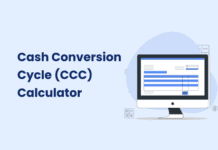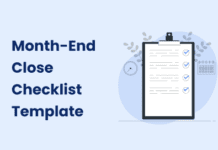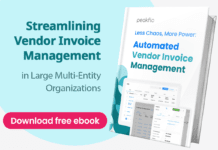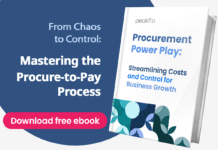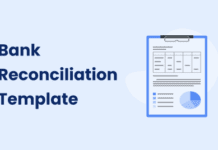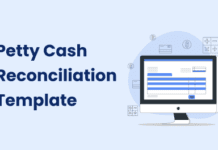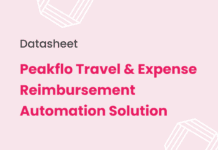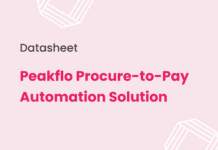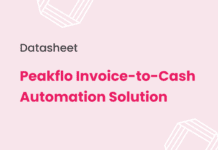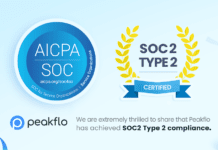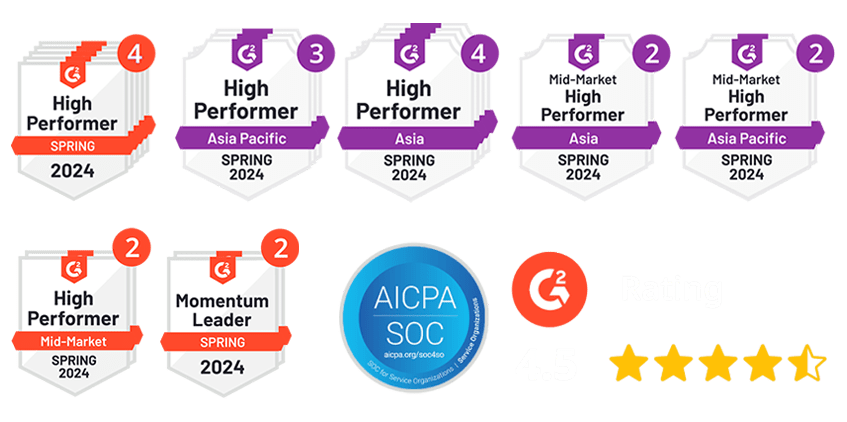Is your business mishandling advance payments? There are ways to deal with that.
Cash comes in before work begins. Sounds great, right? But what happens when the numbers don’t add up? Many large enterprises struggle with accounting payment before services, leading to reporting errors, compliance issues, and even cash flow mismanagement.
If your company collects payments upfront, do you know how to record them correctly? Misclassifying these transactions can distort financial statements, impact revenue recognition, and trigger audits. The bigger the business, the greater the risks.
So, how do you ensure accuracy without overcomplicating your books? Let’s break it down in a way that makes sense—clear, simple, and straight to the point.
What Is an Advance Payment?
An advance payment happens when a customer pays before getting a product or service. Large businesses do this to secure big orders, manage cash flow, or reduce risks. Vendors often request it to cover upfront costs.
For example, think of a software vendor signing a deal with a Fortune 500 company. The company agrees to pay 50% before development starts. That money isn’t revenue yet. It’s a liability until the vendor delivers the final product. If recorded as income too soon, it can mislead investors and create tax issues.
Handling advance payment accounting is the right way to keep financial reports accurate. It also prevents cash flow problems and ensures compliance with accounting rules.
Common Reasons for Advance Payments
Why do businesses ask for money before delivering anything? It’s not just about trust. Advance payments help companies manage cash flow, reduce financial risks, and secure large projects. But how does this affect advance payment accounting? -Let us find out below.
1. Covering Upfront Costs
Some industries can’t afford to start work without early payments. A construction vendor, for example, needs materials, permits, and labor before breaking ground. Without an advance, they would have to cover these costs themselves. Can you imagine financing a multi-million-dollar project out of pocket?
2. Securing Large Orders
Big orders mean big commitments. Manufacturers often request advance payments to avoid overproducing or stockpiling goods. Let’s say a supplier is producing custom machinery for a company. If the customer cancels last minute, the supplier could lose a fortune. A deposit ensures they don’t manufacture expensive equipment that no one will buy.
3. Reducing Financial Risk
What if a customer refuses to pay after receiving a service? This happens more often than you’d think. Advance payments protect businesses from non-payment and bad debt. A SaaS vendor, for instance, will not grant full access to their platform without an upfront fee. It guarantees that the customer will not use their service for months and then disappear without paying.
4. Managing Cash Flow
Even large enterprises need steady cash flow. Imagine an event management vendor booking venues, hiring staff, and setting up logistics before getting paid. Without an advance, they might struggle to cover these business expenses. Upfront payments keep businesses running smoothly without relying on credit or loans.
Examples of Advance Payments
Advance payments happen in many industries. Some businesses rely on them to cover costs, while others use them to secure deals. Let’s look at real-world scenarios.
1. Software Development Contracts
Ever wonder why large enterprises pay for software before it’s built? Custom software takes months to develop. A vendor can’t start coding without funding for engineers, tools, and testing. If a company signs a $500,000 contract, they might pay 30% upfront. That payment isn’t revenue yet—it’s a liability until the vendor delivers key milestones.
2. Bulk Manufacturing Orders
Think about a business ordering thousands of custom-branded electronics. The manufacturer won’t start production without a deposit. Why? Because they need to buy raw materials and set up the production line. If the customer cancels mid-way, the vendor won’t be left with unsellable inventory. Until the order is shipped, that advance sits on the books as unearned revenue.
3. Event Planning and Venue Bookings
Ever tried booking a conference venue without paying upfront? It’s nearly impossible. Event vendors require advance payments to secure locations, book catering, and hire staff. If a company reserves a venue for $100,000, the event planner records that deposit as deferred revenue until the event happens.
4. Subscription-Based Services
SaaS providers often charge annually instead of monthly. Why? It locks in revenue and stabilizes cash flow. If a business pays for a full year of cloud storage upfront, the vendor doesn’t count it as revenue right away. Instead, it’s recognized over time as the service is delivered.
5. Large Equipment Leasing
Leasing heavy machinery isn’t cheap. A construction company renting cranes or bulldozers must often pay in advance. Why? The supplier needs to schedule equipment, handle maintenance, and ensure availability. Until the lease period begins, the advance payment is recorded as deferred income on the supplier’s balance sheet.
6. Consulting and Advisory Services
Many consulting firms require payment before starting work. Imagine a financial advisory firm helping a corporation with risk management. If the company pays $200,000 upfront for a six-month engagement, that amount can’t be recognized as income right away. It’s recorded as unearned revenue and recognized gradually as services are provided.
How Do You Record Advance Payments? (Step-by-Step)
Recording accounting payment before services correctly is important for financial accuracy. Here is a simple step-by-step guide to doing it the right way.
Step 1: Record the Payment
When a customer pays in advance, the business must record the transaction. But this money isn’t revenue yet because the service or product has not been delivered. Instead, it is recorded as a liability on the balance sheet. This amount is called “Unearned Revenue” or “Deferred Revenue” because the business still owes the customer something.
Step 2: Create an Accounting Entry
To show that the business received cash but hasn’t earned it, the following entry is made:
- Debit: Cash (to reflect money received)
- Credit: Unearned Revenue (to record the business’s obligation)
This keeps financial records accurate and prevents overstating income.
Step 3: Track the Obligation
The business must monitor when and how it fulfills its promise. This could be delivering a product, completing a project, or providing a service. Keeping track of this ensures that revenue is recognized at the right time.
Step 4: Fulfill the Obligation
The advance payment is no longer a liability once the business delivers the service or product. The company has earned the money.
Step 5: Recognize Revenue
Now, the business updates its books to show that the money is earned. This is done by adjusting the original entry:
- Debit: Unearned Revenue (to remove the liability)
- Credit: Revenue (to reflect the earned income)
This ensures financial reports show actual earnings instead of just cash received.
Step 6: Review and Adjust Statements
At the end of each accounting period, the business should check its unearned revenue. If part of the work is done, the company can recognize a portion of the payment as revenue. This helps with cash flow planning and keeps financial statements accurate.
Step 7: Keep Proper Records
Every advance payment must be documented properly. Businesses should save:
- Customer invoices
- Payment receipts
- Signed contracts or agreements
- Proof of service or product delivery
Good record-keeping helps avoid disputes, ensures compliance with accounting rules, and prepares for audits.
Why Do You Need Proper Accounting for Advance Payments?
Advance payments accounting help businesses stay financially stable. But if they aren’t recorded correctly, they can create problems. A mistake can lead to cash shortages, incorrect revenue reports, and legal issues. Proper accounting keeps businesses on track and avoids costly errors. Here is how.
1. Keeps Cash Flow Stable
Many businesses need advance payments to cover early expenses. A construction vendor needs money for materials before work starts. A manufacturer needs deposits to buy supplies. But if a company spends this money too soon, it may not have enough to complete the job. Proper accounting keeps cash available for future costs.
2. Prevents False Revenue Reports
Advance payments are not revenue yet. A company hasn’t earned the money until it delivers the product or service. If recorded as income too early, it can make earnings look higher than they really are. Recording payments correctly keeps financial reports accurate.
3. Helps Avoid Legal and Audit Problems
Businesses must follow accounting rules like GAAP (Generally Accepted Accounting Principles). These rules say that revenue should only be recorded when earned. Misclassifying advance payments can lead to tax fines, audit failures, and legal trouble. Keeping these payments in the right accounts helps businesses stay compliant.
4. Makes Refunds and Cancellations Easier
Some businesses offer refunds if a customer cancels before receiving a service. If a company records an advance payment as revenue too soon, refunding it later can cause financial problems. Proper tracking ensures that refunds don’t create unexpected losses or cash shortages.
5. Helps with Financial Planning
Separating advance payments from earned revenue gives businesses a clear view of their finances. It helps them predict cash flow, plan budgets, and make better spending decisions. Without proper tracking, businesses might think they have more money than they do.
6. Builds Trust with Investors and Banks
Lenders, investors, and business partners expect accurate financial reports. If advance payments are recorded incorrectly, it can raise concerns about a company’s financial health. This could make it harder to get loans, attract investors, or secure large contracts. Proper accounting builds trust and keeps financial records reliable.
Best Practices for Managing Advance Payments
Advance payment accounting helps businesses manage expenses and secure deals. However, companies need to track them properly to stay financially stable and compliant. Here is how to do it right.
1. Record Advance Payments as Liabilities, Not Income
When a business gets an advance payment, it hasn’t earned the money yet. Instead of counting it as revenue, it should be recorded as Unearned Revenue or Deferred Revenue on the balance sheet. This prevents mistakes in financial reports.
2. Keep Advance Payments in a Separate Account
Mixing advance payments with regular revenue can create confusion. Businesses should store them in a separate liability account to track them properly. This helps keep records clear and avoids accounting errors.
3. Recognize Revenue Only After the Work Is Done
Businesses should only count advance payments as revenue after delivering the product or service. If recorded too soon, financial reports can be misleading. This can also cause tax problems and reporting errors.
4. Keep Records of Every Payment
Businesses should keep copies of the following:
- Signed contracts
- Invoices
- Payment receipts
These records help track payments, handle refunds, and provide proof if needed for audits.
5. Have a Clear Refund Policy
Customers sometimes cancel orders or ask for refunds. If a business already counted the money as revenue, returning it later can cause financial problems. A clear refund policy helps adjust records correctly when needed.
6. Use Accounting Software to Track Payments
Automated accounts receivable software helps businesses separate earned and unearned revenue. This reduces mistakes and ensures revenue is recorded at the right time. It also makes tax filing and financial reporting easier.
7. Check Financial Records Regularly
Businesses should review their financial reports often to make sure advance payments are recorded correctly. Checking balance sheets and income statements helps catch mistakes early and keeps financial records accurate.
Peakflo: The Best Solution for Managing Advance Payments with Ease
Managing advance payments can be complicated. Businesses must track invoices, handle disputes, send reminders, and apply payments correctly. Doing all this manually takes time and can lead to mistakes. Peakflo automates the process, making it fast, accurate, and stress-free.
Here is how Peakflo’s AI-powered accounts receivable management helps businesses handle advance payments with less effort and more control.
1. Easier Proforma Invoice Validation
Advance payments require clear and accurate invoices. Peakflo makes it easy for businesses to send invoices for customer approval before payment.
- Send invoices for review before customers pay.
- Let customers dispute specific charges if needed.
- Track and resolve disputes in one place.
- Customers can approve invoices in one click, speeding up payments.
Why it matters: Validating invoices before payment reduces errors and prevents delays.
2. Faster and More Reliable Invoicing
Manual invoicing can cause delays and mistakes. Peakflo allows businesses to send accurate invoices digitally, reducing errors and speeding up payments.
- Create professional invoices that follow GST and tax rules.
- Set up approval policies for invoices and credit notes.
- Approve invoices and add e-signatures in seconds.
Why it matters: Businesses need clear and accurate invoices to receive advance payments without issues.
3. No More Manual Payment Reminders
Following up on payments takes too much time. Peakflo automates reminders, so businesses no longer need to chase customers.
- Schedule reminders based on customer type and payment behavior.
- Send payment reminders by email, SMS, or other channels.
- Set up automatic escalation for overdue payments.
- Keep track of all communication in one place.
Why it matters: Automatic reminders help businesses get paid on time without manual follow-ups.
4. Self-Service Customer Portal for Easy Payments
Customers should be able to pay easily and track their invoices without back-and-forth emails. Peakflo’s Customer Portal gives them one place to manage everything.
- Customers can see all their invoices and payments in one dashboard.
- They can raise disputes and ask questions without email delays.
- Finance and customer service teams can track all interactions in one place.
- Customers can pay instantly using the portal.
- Businesses can access a complete history of all communications.
Why it matters: A simple and transparent payment process improves customer experience and speeds up payments.
5. AI-Powered Financial Insights
Manually tracking advance payments can lead to errors and confusion. Peakflo provides real-time financial data, so businesses always know their cash flow.
- View all pending payments at a glance.
- Track invoice payment status in real-time.
- Monitor overdue balances and customer payments.
- See if payment reminders were successfully delivered.
- Get automatic cash flow reports to improve financial planning.
Why it matters: Businesses can see exactly when payments are coming in and make better financial decisions.
6. Automatic Cash Application and Payment Matching
Applying payments manually can cause delays and mistakes. Peakflo automates this process, ensuring payments are correctly applied to invoices.
- No more manually matching payments to invoices.
- Customers can apply payments to invoices instantly.
- Identify which customer made a payment with ease.
- Use OCR technology for quick and accurate payment processing.
- Track revenue collection in real-time.
- Simplifies account reconciliation and reduces errors.
Why it matters: Payments are accurately tracked and applied, preventing errors and confusion.
Conclusion
Handling advance payment accounting the right way keeps cash flow steady and financial records accurate. But tracking invoices, managing disputes, and following up on payments can take too much time. Peakflo automates these tasks, so businesses get paid faster with less effort.
Want to make advance payments easier to manage? Book a demo with Peakflo today and see how it works!

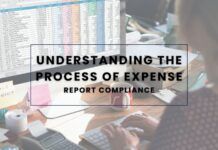





![Agentic Automation Explained: From Basics to Business Impact [2025 Guide] Agentic Automation](https://cdn-kmjmp.nitrocdn.com/YvtqmrsiHUxqerlSiZgbfzqqTARWTElr/assets/images/optimized/rev-a4aafe3/blog.peakflo.co/wp-content/uploads/2025/07/d2182d50-cc78-4be9-8f70-b407b7f098e4-218x150.webp)
